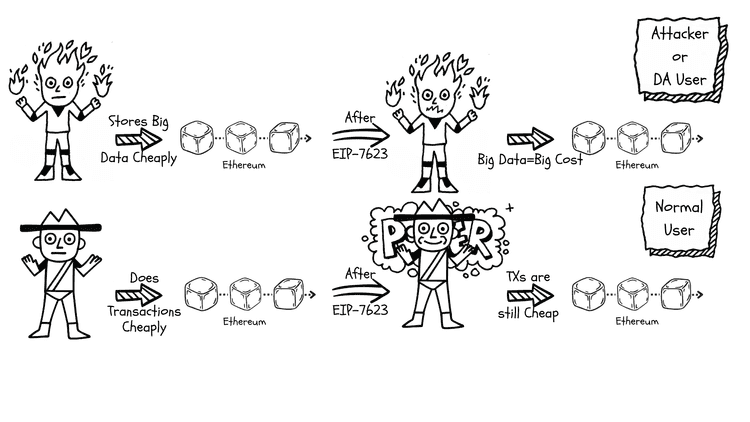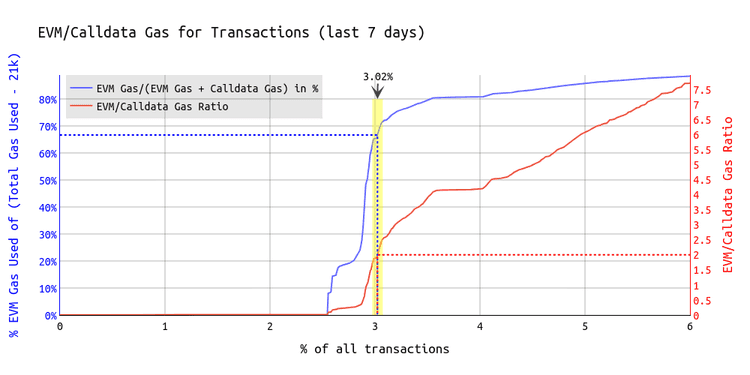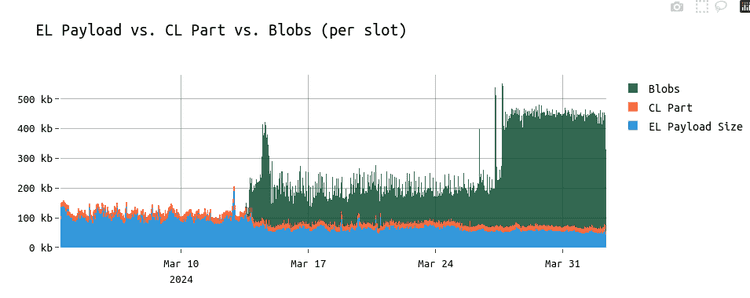EIP-7623: Increase Calldata Cost


Ethereum is once again reshaping its core economics, this time by re-pricing how data flows through the network. With EIP-7623, cheap calldata is no longer a loophole for oversized blocks but a pressure valve for stability. By making raw data more expensive while leaving everyday transactions untouched, Ethereum tilts the balance toward scalable rollups and efficient blobs. This isn’t just a fee tweak, it’s a strategic move to harden the network against spam, prepare for higher gas limits, and future-proof Ethereum’s modular roadmap. In short: higher costs for bulk data, lower friction for real users. Read the full article below and stay ahead of Ethereum’s next big shift.
TL;DR
EIP-7623 reshapes Ethereum’s gas model by raising calldata costs to prevent oversized blocks, deter spam, and push rollups toward blobs. Ordinary users see little change, but data-heavy apps must adapt, strengthening scalability and fee markets. Now go read the full detailed breakdown below, along with the key highlights:
Introduction
Ethereum is constantly evolving to balance scalability, security, and decentralization. One of the latest efforts in this journey is EIP-7623, a proposal that rethinks how the network prices transaction data. Though highly technical under the hood, the heart of EIP-7623 is easy to grasp: it aims to make Ethereum more stable and ready for the future by adjusting the cost of sending data on-chain.
What is EIP-7623?
Today, when people or apps send a transaction to Ethereum, they often include “data”, instructions for smart contracts, information for Layer 2 rollups, or even simple messages. This data, called calldata, has been relatively cheap to include. While that helped boost innovation and rollup adoption, it also led to an unintended side effect: Ethereum blocks could become unpredictably huge if lots of data-heavy transactions appeared.
EIP-7623 proposes to raise the minimum cost for this transaction data. In simple terms: if you’re sending a lot of raw data with little actual computation, you’ll now pay a higher fee. The aim is to prevent oversized blocks that could strain the network, while leaving typical transactions unaffected.
Who Proposed It?
The proposal is authored by Toni Wahrstätter (a noted Ethereum researcher) and Vitalik Buterin, Ethereum’s co-founder. Their work benefited from broad community feedback, including from major Layer 2 teams and protocol researchers.
Why Was It Needed?
Ethereum’s blocks have a gas limit that controls how much “work” can happen per block. However, blocks have no strict limit on their byte size, how much literal data they carry. Because data costs were low, some blocks could, in theory, become several megabytes large, creating a risk for network performance and node participation.
Now that Ethereum has introduced blobs through EIP-4844 (a better way for rollups to post large data), cheap calldata is no longer necessary. EIP-7623 recalibrates the system: rollups and apps that need heavy data are nudged to use blobs, while Ethereum’s main layer remains optimized for transactions and execution.
How Does It Work?
Currently, transaction fees on Ethereum depend mostly on how much computation and storage a transaction requires. Calldata costs are fixed at 16 gas for each non-zero byte and 4 gas for each zero byte.
EIP-7623 introduces a new rule: a transaction must pay at least a minimum gas cost per byte of calldata, whether it does much computation. Specifically, it sets a floor such that:
Technically, the transaction gas used will be calculated as the maximum of:
If your transaction doesn’t involve much execution logic but carries a lot of data, your fee will be bumped up to match this minimum data cost.
In practice:
Example
To make this concrete, let’s walk through two simple transactions:
Before EIP-7623
After EIP-7623

Are You Affected?
Ordinary Users
For the vast majority of Ethereum users, EIP-7623 will have negligible impact. Common transactions such as sending ETH, transferring ERC-20 tokens, or interacting with decentralized applications typically involve sufficient computational work relative to their calldata size. For instance, a standard ERC-20 transfer function consumes approximately 46,121 gas, with only about 620 gas attributed to calldata. This results in a high EVM-to-calldata gas ratio, ensuring these transactions remain unaffected by the new pricing structure. Analyses indicate that only about 3% of transactions would have incurred higher fees under EIP-7623, primarily those with large calldata and minimal computation.

Rollups and Layer 2 Solutions
Rollups, which batch multiple transactions and post the data to Ethereum for security, are more directly impacted. Historically, many rollups used calldata to post their transaction data. With EIP-4844 introducing blobs, a more efficient and cost-effective method for data availability, EIP-7623 incentivizes rollups to transition to blobs by making calldata more expensive. This shift not only reduces costs for rollups, but also alleviates network congestion on Ethereum’s main layer. However, smaller or emerging rollups might face challenges adapting to blobs, especially if they cannot fully utilize the 128 KB blob size, potentially leading to inefficiencies unless blob-sharing mechanisms are adopted.

Data Availability and Specialized Applications
Applications that rely heavily on storing large amounts of data on-chain, such as those involving zero-knowledge proofs or extensive Merkle trees, may experience increased costs. These applications often have transactions with substantial calldata but minimal computational requirements. Under EIP-7623, such transactions would face higher fees unless they adjust their designs or migrate data storage to blobs or off-chain solutions.
Potential Network Attackers
One of the motivations behind EIP-7623 is to deter potential denial-of-service (DoS) attacks that exploit low calldata costs to flood the network with oversized blocks. By increasing the cost of calldata, the proposal makes such attacks economically unfeasible, enhancing the overall security and stability of the Ethereum network.
Benefits for Ethereum
EIP-7623 delivers several important gains:
Stability
By capping how large blocks can realistically get, Ethereum becomes more resilient against network attacks and node overload.
Scalability Readiness
It clears the way for raising the gas limit (allowing more transactions per block) without compromising safety.
Economic Alignment
It encourages users who mainly need data availability (not computation) to use blobs or Layer 2s, supporting Ethereum’s modular roadmap.
Healthier Fee Markets
It separates data and computation more cleanly, which strengthens Ethereum’s multidimensional fee design.
In essence, EIP-7623 fine-tunes Ethereum’s resource pricing to fit the modern era of rollups and Layer 2 ecosystems.
Community Discussions and Alternatives
Community discussions around EIP-7623 were rich and thoughtful. Early on, contributors explored whether the calldata floor might inadvertently harm important but uncommon use cases, like on-chain proofs for zero-knowledge applications or large Merkle tree verifications. To address these concerns, the authors conducted detailed data analysis and adjusted the calldata cost floor to a balanced level that would not excessively penalize legitimate users.
Some voices raised the possibility of users bypassing the increased calldata cost by embedding data into transaction access lists or event logs. However, Ethereum developers carefully evaluated these scenarios and concluded that even with the change, access lists would remain more expensive than calldata for data storage, and using logs would not avoid the calldata requirement since data still needs to be included in the transaction payload.
Alternative ideas like introducing a hard cap on total calldata per block were discussed but ultimately rejected. Hard caps are rigid and could unintentionally limit valuable use cases. Instead, adjusting prices through gas fees, as EIP-7623 does, offers flexibility: high-data users can still transact if they are willing to pay, and the network’s overall health is preserved.
A broader conversation also emerged around Ethereum’s roadmap. Some suggested simply raising the gas limit without adjusting calldata prices to boost throughput. However, many researchers, including Vitalik, emphasized that this would increase the risk of network instability unless calldata costs were addressed first. EIP-7623 thus emerged as a critical piece of enabling future scalability improvements safely.
Throughout these discussions, there was a strong emphasis on ensuring that Ethereum remains inclusive for diverse use cases while gradually nudging the ecosystem toward more sustainable practices. The general consensus is that EIP-7623 is a prudent and well-measured adjustment rather than a radical shift.
Current Status
EIP-7623 is in the "Final" phase. The proposal is included in the Pectra upgrade, live from May 2025. The Ethereum Pectra upgrade aims to optimize Ethereum’s performance, and EIP-7623 plays a crucial role in this by adjusting calldata costs to reduce maximum block sizes.
Conclusion
EIP-7623 represents a carefully calibrated step in Ethereum’s ongoing evolution, addressing the critical challenge of managing transaction data costs to enhance network stability and scalability. By increasing the minimum cost of calldata, the proposal mitigates the risk of oversized blocks, strengthens Ethereum’s resilience against potential attacks, and aligns resource pricing with the modern ecosystem of rollups and blobs introduced by EIP-4844.
While most ordinary users will experience negligible impact, rollups and data-heavy applications are incentivized to adopt more efficient solutions, supporting Ethereum’s modular roadmap. Through extensive community dialogue and data-driven refinements, EIP-7623 balances the needs of diverse use cases with the network’s long-term health, paving the way for future scalability improvements while maintaining Ethereum’s commitment to decentralization and security.
Resources and Further Readings
Frequently asked questions
Check out most commonly asked questions, addressed based on community needs. Can't find what you are looking for?
Contact us, our friendly support helps!
How does EIP-7623 affect Ethereum gas fees for regular users?
EIP-7623 minimally impacts regular users, as it primarily targets transactions with large calldata and low computation. Most standard transactions remain unaffected.
Why is Ethereum increasing calldata costs with EIP-7623?
The increase aims to prevent oversized blocks by discouraging excessive calldata usage, promoting network stability and encouraging the use of blobs for data-heavy operations.
What are the implications of EIP-7623 for Layer 2 rollups?
Layer 2 rollups may face higher costs if they continue using calldata for data posting. EIP-7623 incentivizes the transition to blobs, which offer a more efficient data availability solution.



